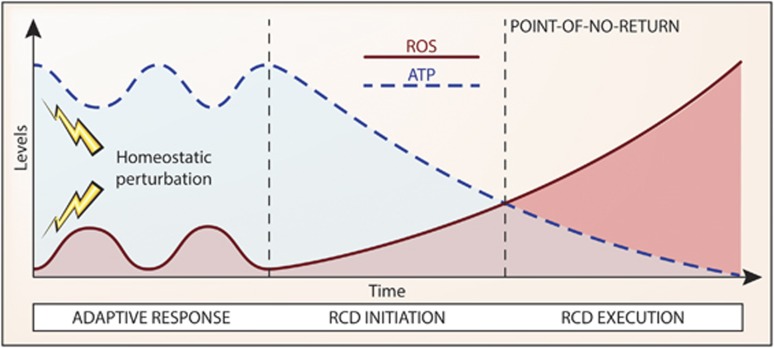Figure 4.
Declining ATP levels and redox alterations as a potential cause of regulated cell death. A growing amount of evidence indicates that the pharmacologic or genetic inhibition of the mechanisms that are commonly regarded as the executioners of regulated cell death (RCD) changes the kinetics of the process while altering its morphologic and biochemical manifestations, but fails to mediate bona fide long-term cytoprotection. It is therefore difficult to evaluate the actual causes that push cells beyond the point-of-no-return between life and death, especially as it remains to be formally demonstrated where the frontier between reversible alterations of homeostasis and the irreversible degeneration of cellular functions stands. ATP is required for a wide panel of vital activities, including the maintenance of the ionic equilibrium across the plasma membrane, implying that the drop of ATP concentrations below a specific threshold level may irremediably compromise the ability of cells to maintain structural integrity (which is the most reliable marker of cell death currently available). Along similar lines, variations in the oxidative potential of the intracellular milieu not only inhibit several enzymatic activities, including mitochondrial ATP synthesis, but also cause direct structural damage to organelles and membranes. We therefore hypothesize that declining ATP levels and a compromised redox homeostasis may constitute common causes of cell death in many RCD models. ROS, reactive oxygen species

